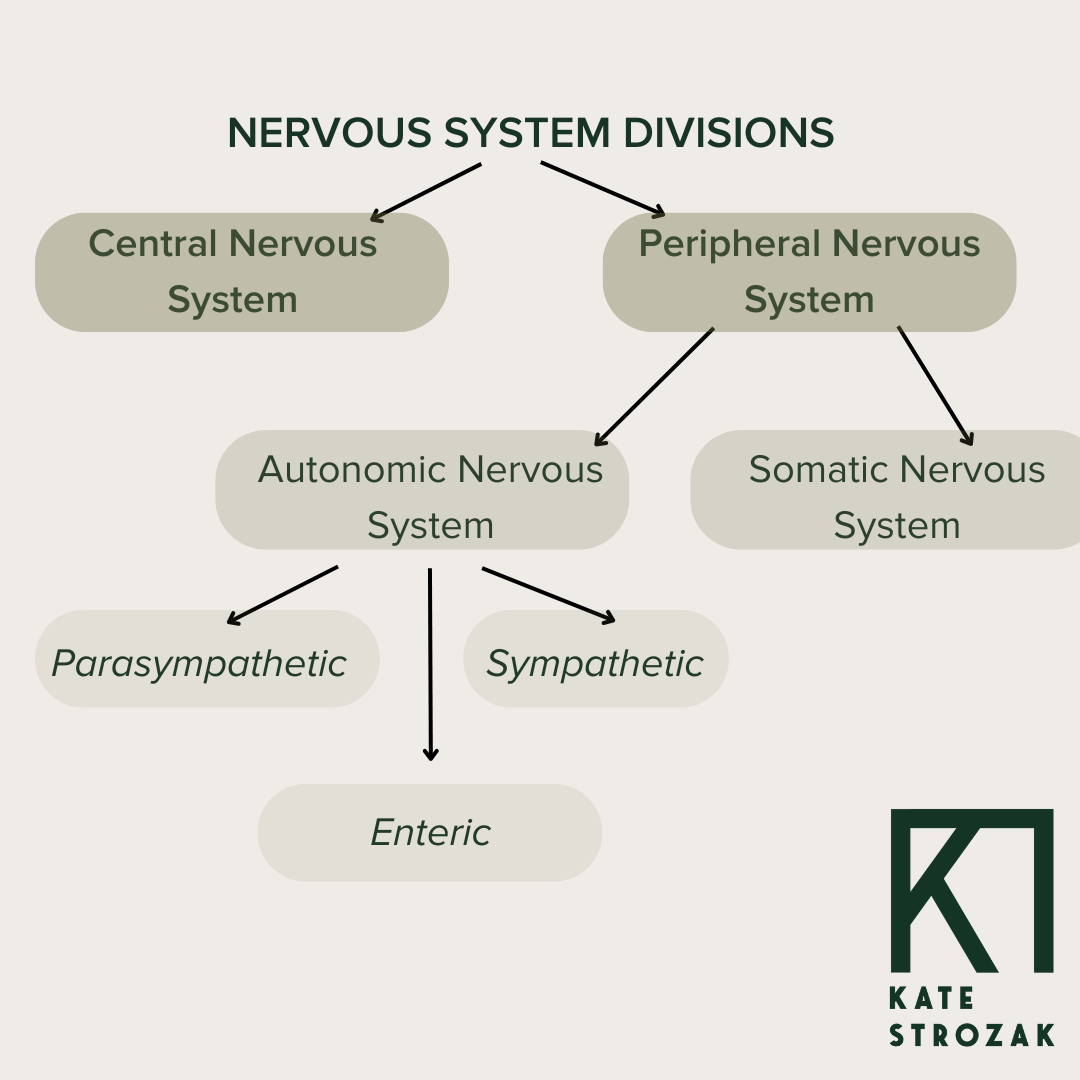Attention to the Sympathetic State
The parasympathetic & sympathetic nervous systems are two of the three branches of the autonomic nervous system - which is one of the two branches of the peripheral nervous system. That’s a lot to explain but if you’re visual, this is a very rudimentary illustration of this.
When our brain perceives threat or danger, our thalamus activates our amygdala which then releases adrenalin and starts the cascade of physiological responses associated with the sympathetic state. These responses prepare us to fight, flight or freeze.
When our brain does not perceive threat, we exist within the parasympathetic state. If you’re familiar with the vagus nerve, it is a key peripheral nerve for triggering parasympathetic activity.
Much focus and attention has been placed upon training the parasympathetic nervous system through breath work, mindfulness and various neuro-hacks and trickery. However, this is only one side of the coin. If all we ever do is train the parasympathetic nervous system, what happens when we necessarily have to enter into the sympathetic state? Will our body be ready to do so?
Ideally, we could enter into the sympathetic state when necessary but then quickly return to the parasympathetic state once any danger has passed. If this is the case, shouldn’t we do something to train our sympathetic state in order to promote a healthier stress response and more resiliency? Yes, I believe so.
Research supports cardiovascular training including interval training and cold exposure as two ways to activate our sympathetic state. In a movement setting, offering moments of intense challenge can be a way we can integrate this concept into our work. I have found isometric holds and hand eye coordination tasks to be particularly effective in this effort.
Much more to discuss on the subject but closing out here for now!

